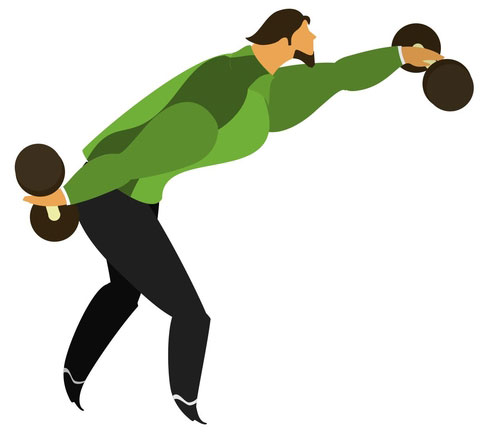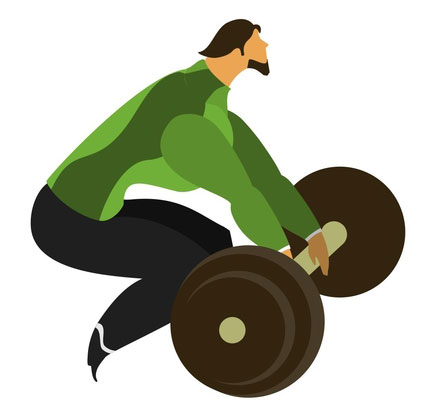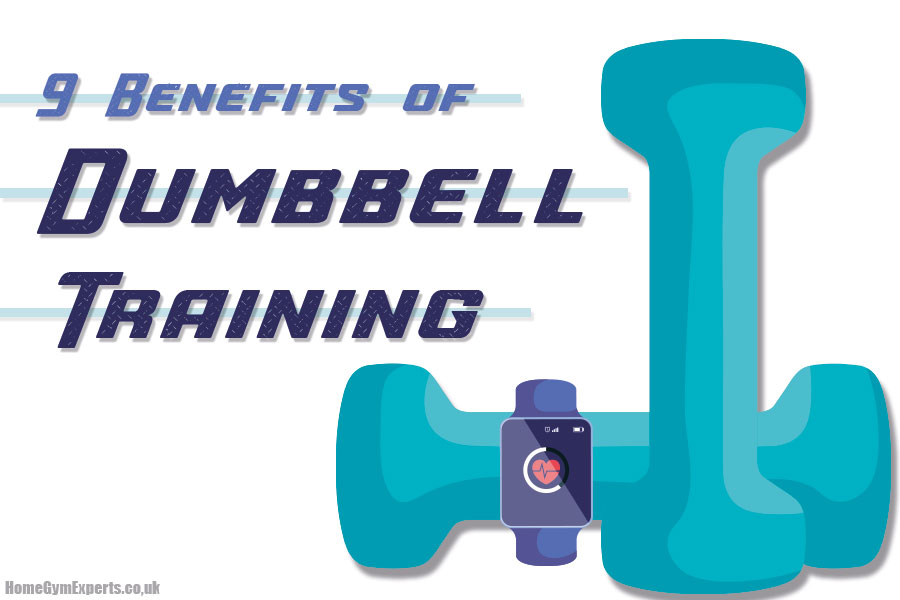Not all weights are equal. Adding weights to your workouts increases the intensity, but dumbbells and barbells each bring their risks and rewards. In this guide, we’ll weigh up which weight is safest and give you some expert tips on training safely.
Quick answer: Which is safest?
Dumbbells are the safer option overall; however, like any other piece of gym equipment, the best way to prevent injury is to maintain proper form and use weights properly. Dumbbells are easy to use and are adaptable. Barbells, on the other hand, carry a higher risk of injury.
Are dumbbells and barbells dangerous?
Adding weights to any workout carries an increased risk for injury. From strains to impingements, opening your strength training to weights can lead to a trip to the doctor.
The dangers of dumbbell and barbell workouts come from the equipment itself and your technique when using it.
Lifting too much and lifting too fast can be the cause of some significant injuries.
You can rupture tendons, pull or strain muscles and cause other tissue damage. Moving beyond the natural range of motion when lifting weights is also dangerous. Forcing your body into flexibility with added weights can over-extend your joints.
Having improper form is something to look out for when adding weights to your workout. When you introduce dumbbells and barbells to your training, there is a higher strain on your body and form becomes more important than ever.
One wrong move can tweak your back or cause an injury, so it’s better to start light.
Dumbbells and barbells each come with their own potential dangers that you should be cautious of before you start to lift. Let’s look at some of the risks with each type of weight.
What can go wrong with dumbbells?

Dumbbells are a good starting point for introducing weight into your workouts, but they’re not fool proof. It’s not enough to pick out a set of dumbbells and just start lifting.
The most common dumbbell training mistakes are:
- Trying to lift too much
- Rushing
- Losing form
- Holding your dumbbells incorrectly
Any of these can lead to a preventable injury.
Three safe dumbbell training tips
Here’s a quick rundown of some of the basics you need to know to train safely with hand weights.
- Keep your wrists straight – The essential thing to watch for is that you are holding your weights with straight wrists. Your wrists need to be straight to keep good control of your grip and avoid any injury.
- Don’t rely on momentum – Using momentum to move your weights is also an indicator that you’re lifting too heavy. When you’re relying on momentum, you’re not actually working the muscles you’re trying to target.
- Use the right weight for the right job – When it comes to using dumbbells, don’t assume you will need the same set of weights for every exercise. The muscles in your body are unbalanced and there will be stronger muscles than others, so needing different weights is normal. By forcing your body to use dumbbells that are too heavy, you’ll experience muscle fatigue, pain and potential injury. *
* I lost months of training trying to lift dumbbells that were around 10kg too heavy. I did this three times before I dropped the weight and made some really positive gains. Lesson learned. Lifting a weight that’s too heavy can really set your training back.
Related Guides
- Best Rubber Hex Dumbbells
- Are Concrete Dumbbells Safe?
- Dumbbell Buying Guide
- Help! My Muscles Are Still Sore After 4 Days!
- Adjustable Steel Dumbbells
What can go wrong with barbells?

Barbells are less forgiving than dumbbells. They’re heavier, so emphasis on form is even more pressing. If you don’t have a firm grip, don’t engage your core, or start lifting too heavy too fast, you’re going to end up hurting yourself.
The only way to up the intensity of a barbell workout is to add more weight, leading to a lot of stress and compression of the joints. You need to counteract these effects with cross-training to decompress them or limit yourself to only moderate weights.
When training with barbells, you’re only using one motion: up and down. This movement doesn’t mimic all the different types of activity you see in your daily life.
In everyday movement, you have more variety, so a common problem with barbells is that they can cause an imbalance in your strength.
If some muscles are stronger than others, it’s possible to overcompensate in other movements. Barbell training doesn’t translate into the natural movement of everyday life, so the neglected muscles may pay the price.
Three safe dumbbell training tips
Here’s a quick rundown of some of the basics you need to know to train safely with hand weights.
- Get the right gear – While squat racks or cages, or barbell stands aren’t the cheapest gym gear you’ll ever buy, they’re essential if you’re planning on doing anything other than curling or deadlifts safely. If you’ve got a squat rack, it’s safe to train every exercise on your own too. *
- Know your limits – As with dumbbells, start light and stay within a 5 rep range if you’re new, or not sure what to start with. I like to practice my form with just an Olympic bar and then go from there.
- Work on your core and use it! As you’ll generally be lifting heavier weights and engaging in compound strength exercises with barbells, learning how to breathe and brace is essential to safe training.
* And don’t use chairs (yes, we’ve seen that done and it’s a dangerous idea!
How to train safely with dumbbells and barbells
Just because some risks come with free weights, that doesn’t mean you should avoid them entirely. They have their place, but like everything else, moderation is key.
To safely train with dumbbells and barbells, remember these three principles:
- Be in control – don’t bend yourself out of shape to get that rep in, or use momentum to lift.
- Know your form – There are countless videos on youtube for everything from bicep curls to bench press. Each takes a few minutes to watch but can teach you the proper lifting form for a lifetime of training. All free!
- Don’t sacrifice your form to lift heavier – You might not be able to lift as heavy today as you did the week before and if you’re unsure of your baseline, start light and work your way up. It’s easier to intensify the workout than it is to undo the damage.
Safety doesn’t only come from using the weights correctly but recognizing when not to use them. Rest days are essential in strength training with barbells and dumbbells.
Strength training is intense and can be hard on your body, so taking rest days in between to cross-train or skip the gym will do your body a favour. Other basics, like getting plenty – or extra – sleep can also go a long way to healing and preventing injury.
Conclusion: are dumbbells safer than barbells?
When it comes to overall safety, dumbbells are the best option. By being easier on the joints and mimicking more natural movements, dumbbells win. They’re easier to manoeuver and they keep you in control of the weight.
But if you want to train for the long term and stay safe, research into form and watch videos on what you should and shouldn’t be doing during each exercise. It’s so easy to lift the wrong way for years without realising it.
Happy (and safe) lifting!









